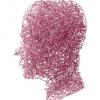I know this thread is fairly old. I have similar questions:
1. Does it need to be enteric-coated?
2. Does it need to be taken on an empty stomach?
3. Is it okay to chew the tablets?
In another SAM-e thread, Mishael posted this which can be found in this Huntington College of Health Sciences article:
The truth about enteric-coating and SAMe
First of all, just because SAMe is absorbed in the intestines doesn’t mean that it must be enteric-coated. After all, virtually all vitamins and minerals are absorbed in the intestines, and yet they don’t have to be enteric-coated in order to be absorbed. As a matter of fact, a Medline search did not indicate that enteric-coating was used in any study conducted on SAMe—and yet the SAMe was still able to be absorbed and utilized effectively enough to produce the myriad of positive results reported. Clearly this would not be possible if SAMe had to be enteric-coated.
The real reason that some manufacturers’ enteric-coat SAMe is for stability. You see, SAMe is a very hydroscopic substance—that is, it has an affinity for water, and will readily break down with minimal exposure to moisture. As a matter of fact, SAMe is so hydroscopic that if you place a small amount of the raw material on your finger, the SAMe will turn into liquid within seconds. This creates a challenge for manufacturers who wish to produce supplements of SAMe. One method that can be used to stabilize SAMe is enteric-coating. This is not really the best method, however, for a couple of reasons. The first is that the enteric-coating is on the outside of the tablet, and if the tablet is damaged, it is no longer effective. The other reason is that the interpretation of federal manufacturing regulations allow enteric-coating to be used on drugs, not on dietary supplements.
If that's true, then I don't know why you couldn't take it with food or chew the tablets if you wanted to.
Despite the claim above that there were no studies that use enteric coated tablets, there are some. The above was written in 2009, so maybe it was true back then. This study says enteric coated tablets are absorbed 2.14-2.66% compared to IV. They didn't test uncoated tablets, but said, "We established that the bioavailability of SAMe administered as enteric-coated tablets is low, but higher than the value of 0.5% to 1.0% previously quoted for conventional formulations", with this reference, which references three other studies. So, this seems to be good evidence that enteric coating is a big improvement.
This is what Swanson has to say on their blog site:
The directions for supplements that do not require food to be assimilated into the system generally state to take them on an empty stomach, as they won't have to process through the whole digestive system, but will absorb more quickly into the bloodstream. However, one of the side-effects of SAMe is nausea, and most people find that when they take it with food, they do not experience this unpleasant reaction. It may take longer for it to reach its destination, but the actual bioavailability of it is unchanged. If you are able to take it without stomach upset, though, feel free to take it on an empty stomach.
The directions for the 400 mg strength of Swanson Ultra SAMe omit the words “with food” and simply state take “with water.”
No references were cited.
Searching for answers to this question, over and over again, in forums and journals, pretty much everywhere else says to take the enteric-coated tablets on an empty stomach. But, I haven't yet found references for taking it on an empty stomach. Is it just a myth and assumption because that's most often how it works with other things are enteric-coated?
I started taking 2400mg (400mg x 3 x 2) per day. It was giving me a stomach ache when taking it on an empty stomach. I've started taking it with food and the stomach ache is gone.
You might wonder if it's still effective for me when I take it with food, or how it compares. Well, sadly, it's hard for me to tell. So far, it's effects are pretty subtle either way, except for the stomach ache when taking it on an empty stomach. I will need more time to experiment.





















































